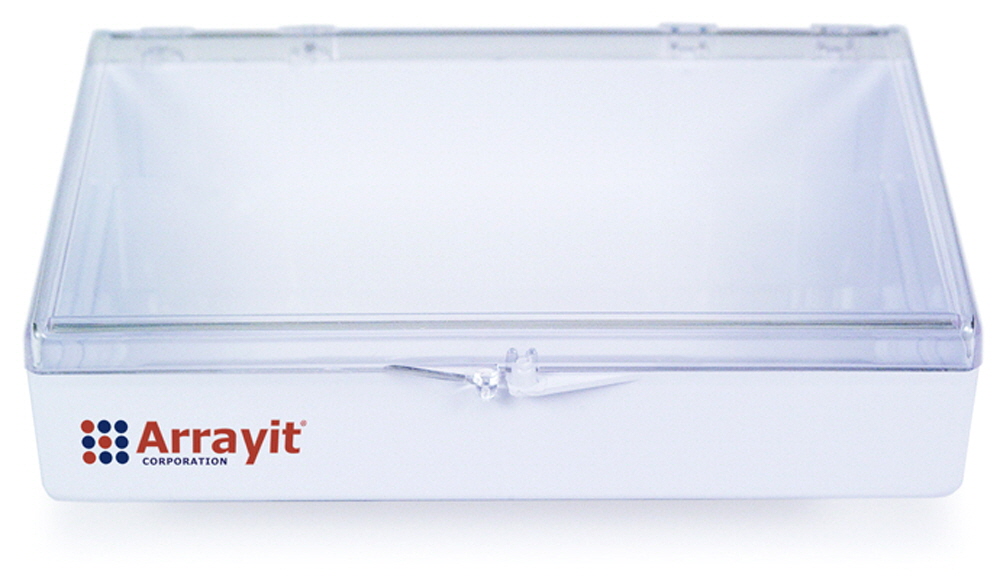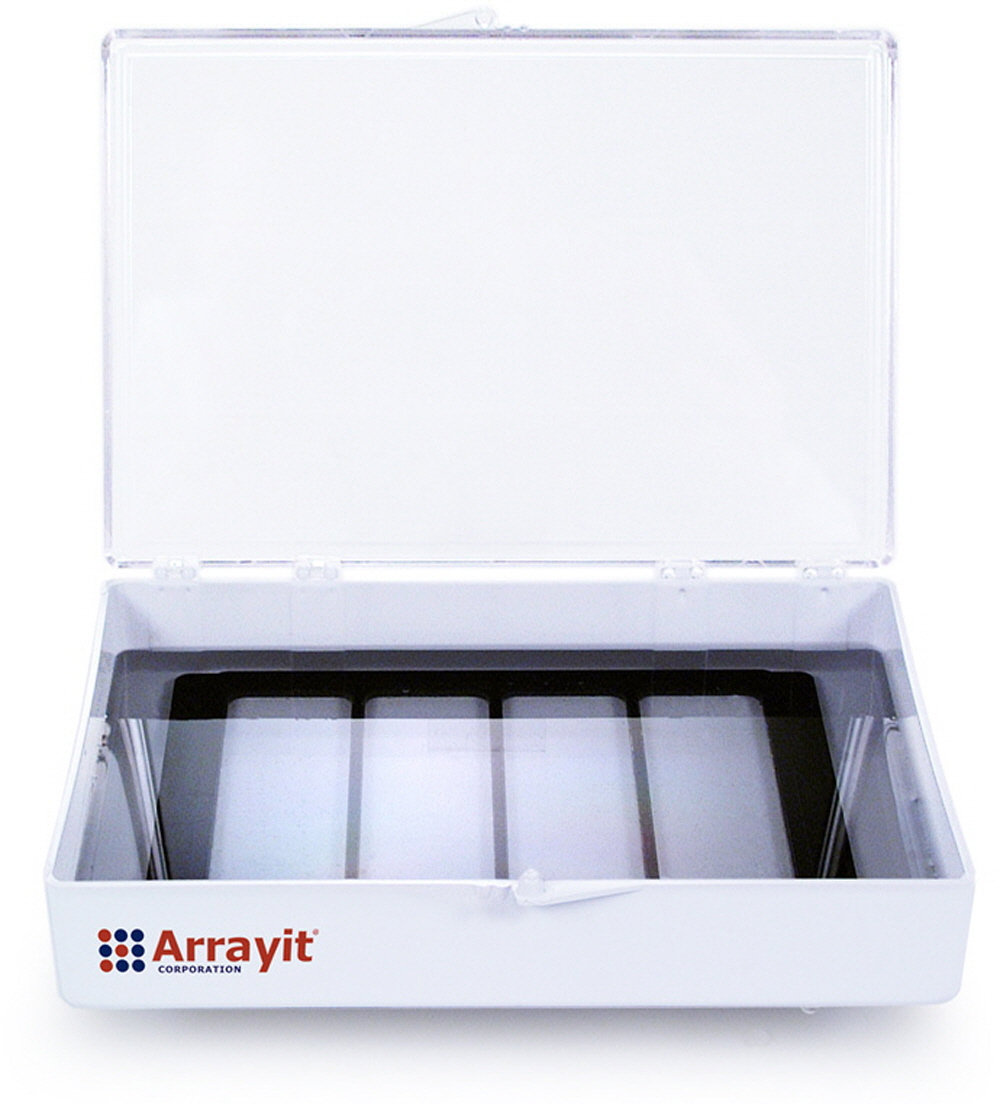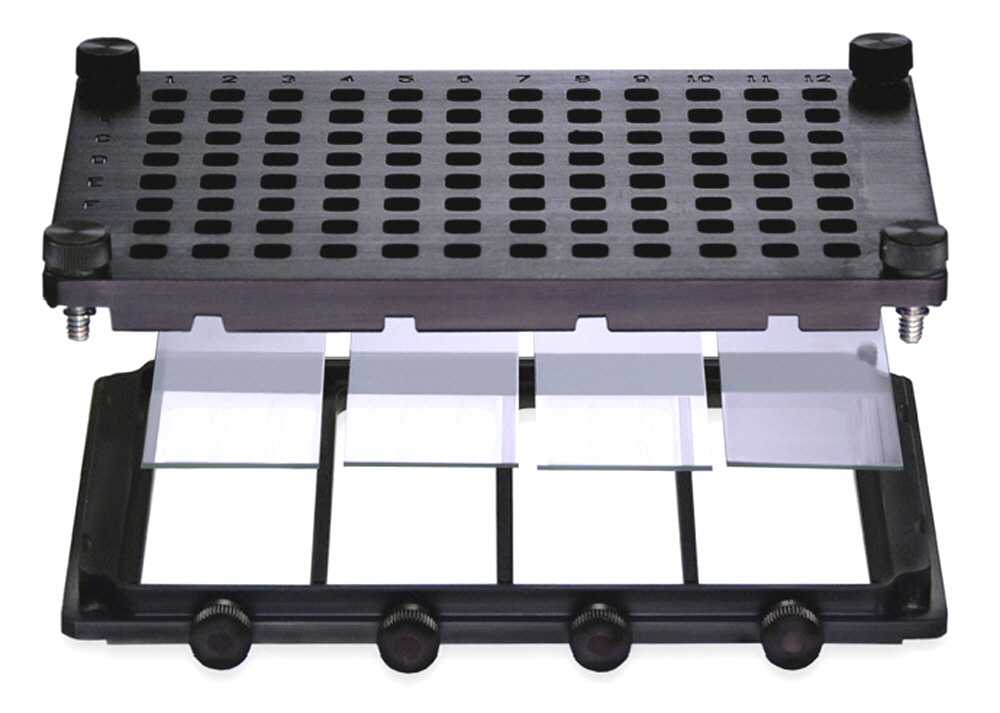Wash Stations and Trays
Data Sheet
![]() Shop this product in our online store
Shop this product in our online store
Microarray Wash Trays to Accelerate Blocking, Wash and Rinse Steps for Glass Substrate Slide DNA and Protein Microarrays<

Arrayit offers affordable, durable and and easy to use injection molded plastic trays with lids for microplate-formatted microarray processing and washing. Microarray Wash Trays accommodate microarray reaction hardware with a 4 glass substrate slide capacity including Arrayit AHC4x24, AHC4x16, AHC4x8, and MMH96 reaction tools. Trays are compatible with Arrayit’s complete line of DNA and protein microarray blocking and wash buffers as well as buffers containing light solvents, and these tools are indispensible for microarray laboratories using glass slides from Arrayit, Agilent, Roche NimbleGen and other suppliers.

Figure 1. Base of reaction tool filled with 4 slides, and 100 ml of buffer. This container sits on your favorite shaker to create agitation for washing microarrays slides.

Figure 2. AHC4x24 Hybrdization Cassette which enables 96 microarrays, 24 microarrays per slide substrate. See the tools section of our website for other hybridization cassettes compatible with this container. These reaction tools and Array Plate hybridization station are sold separately.
Protocol
Arrayit Microarray Wash Trays are most useful after a set of hybridizations or incubations are completed on the Array Plate Hybridization Station using a plate-based multi-well hybridization cassette.
1. Expel hybridization reaction from all the wells first and immediately proceed to remove top of the reaction casssette lid in a large volume of wash buffer designed for your assay.
2. Typically 3 or more washes are required after each reaction, therefore have 1 tray setup for each of the buffers you want to use, so you can quickly transfer the microarrays on the base between each buffer. Use ~100 ml of buffer. Put the tray on a shaker to provide agitation that will provide a very homogenous wash across all the microarrays on the slide substrates. The microarrays stay in the base of the tool.
3. After washes are complete, remove microarrays 1 at a from the base of the reaction tool and dry in a Microarray Centrifuge. If more reactions are requried, have a second clean and dry microarray hybridization cassette of the same format ready to load directly after drying the microarrays for subsequent hybridization, binding or detection reactions.

